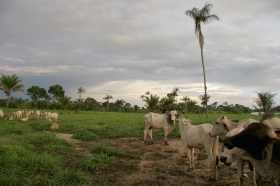 A fire-free farming method practiced by early inhabitants of the Amazonian savannahs could help inform efforts to conserve and rehabilitate these important ecosystems around the world, a study has found.
A fire-free farming method practiced by early inhabitants of the Amazonian savannahs could help inform efforts to conserve and rehabilitate these important ecosystems around the world, a study has found.
The research provides greater historic context for findings presented at a conference earlier this year (26 January), which suggested that slash-and-burn — in which trees are felled, left to dry and then burned to prepare land for farming — provides better growing conditions for valuable trees such as mahogany.
This latest study, published in Proceedings of the National Academy of Sciences (9 April), found that 800 years ago, prior to European settlement of Latin America, indigenous farmers had developed a technique known as ‘raised-field’ farming to manage land sustainably without using fire.
The method involved constructing small agricultural ‘mounds’ which promoted drainage, soil aeration and moisture retention. It conserved soil nutrients and organic matter, and preserved soil structure.
The ancient technique was studied by researchers, who have created the first detailed picture of land use by documenting the very low frequencies of charcoal particles — an indicator of fire — in the savannahs of French Guyana.
Source : ENN




































